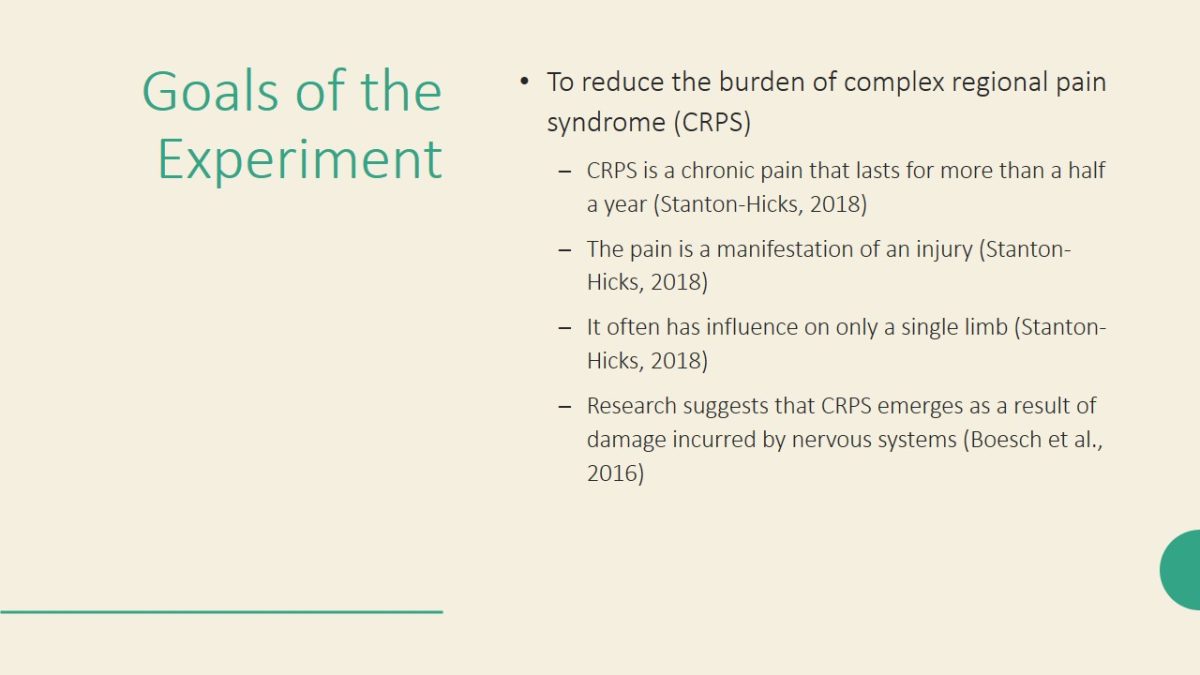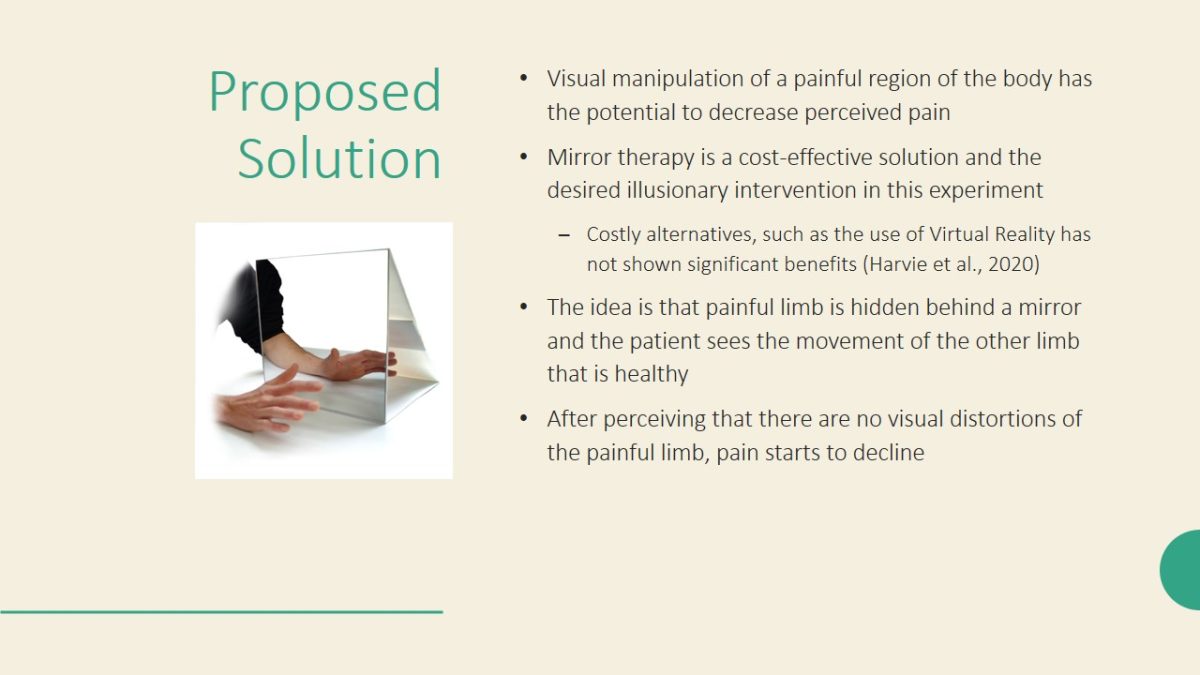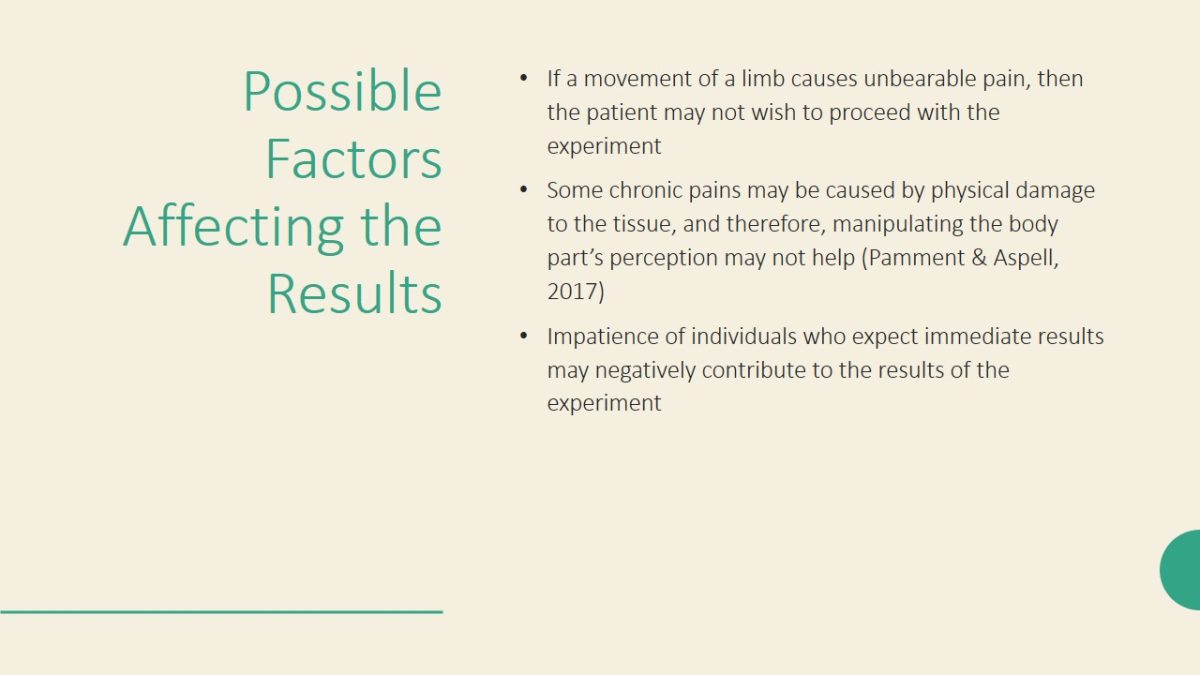Goals of the Experiment
To reduce the burden of complex regional pain syndrome (CRPS):
- CRPS is a chronic pain that lasts for more than a half a year (Stanton-Hicks, 2018);
- The pain is a manifestation of an injury (Stanton-Hicks, 2018);
- It often has influence on only a single limb (Stanton-Hicks, 2018);
- Research suggests that CRPS emerges as a result of damage incurred by nervous systems (Boesch et al., 2016).

Proposed Solution
- Visual manipulation of a painful region of the body has the potential to decrease perceived pain.
- Mirror therapy is a cost-effective solution and the desired illusionary intervention in this experiment;
- Costly alternatives, such as the use of Virtual Reality has not shown significant benefits (Harvie et al., 2020).
- The idea is that painful limb is hidden behind a mirror and the patient sees the movement of the other limb that is healthy.
- After perceiving that there are no visual distortions of the painful limb, pain starts to decline.

Possible Factors Affecting the Results
- If a movement of a limb causes unbearable pain, then the patient may not wish to proceed with the experiment.
- Some chronic pains may be caused by physical damage to the tissue, and therefore, manipulating the body part’s perception may not help (Pamment & Aspell, 2017).
- Impatience of individuals who expect immediate results may negatively contribute to the results of the experiment.

Discussion
- The experiment will succeed in most cases, because:
- Pain is often subjective.
- Nervous system is responsible for pain, illusions may act as a painkiller.
- In cases when employing illusions for treatment of pain is possible, illusions are a better alternative to using opioids, because:
- Opioids have many adverse effects, including both physical and cognitive outcomes (Chung et al., 2019).
- Opioids may cause dependence, which may later result in substance abuse (Chung et al., 2019).

References
- Boesch, E., Bellan, V., Moseley, G. L., & Stanton, T. R. (2016). The effect of bodily illusions on clinical pain: A systematic review and meta-analysis. Pain, 157(3), 516-529.
- Chung, C. P., Callahan, S. T., Cooper, W. O., Dupont, W. D., Murray, K. T., Franklin, A. D., … & Ray, W. A. (2019). Individual short‐acting opioids and the risk of opioid‐related adverse events in adolescents. Pharmacoepidemiology and Drug Safety, 28(11), 1448-1456.
- Harvie, D. S., Smith, R. T., Moseley, G. L., Meulders, A., Michiels, B., & Sterling, M. (2020). Illusion-enhanced virtual reality exercise for neck pain: A replicated single case series. The Clinical Journal of Pain, 36(2), 101-109.
- Pamment, J., & Aspell, J. E. (2017). Putting pain out of mind with an ‘out of body’ illusion. European Journal of Pain, 21(2), 334-342.
- Stanton-Hicks, M. (2018). Complex regional pain syndrome. In J. Cheng & R. W. Rosenquist (Eds.), Fundamentals of Pain Medicine (pp. 211-220). Cham, Switzerland: Springer.